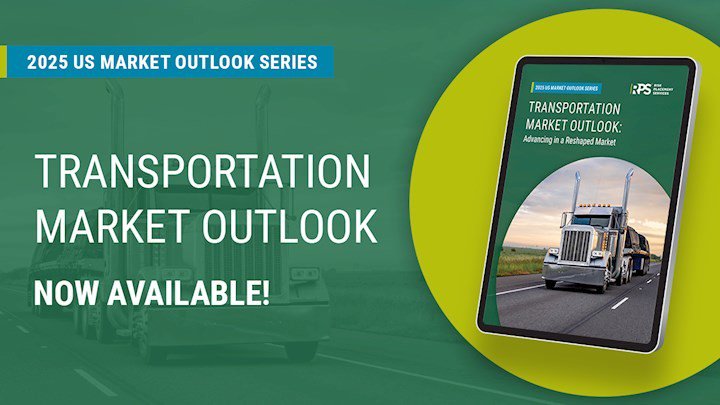
- Transportation
- Reports
2025 Transportation Market Outlook
Navigate the evolving US transportation insurance market, where rising premiums, regulatory shifts and technological advancements reshape the landscape.
The 2025 Transportation Market Outlook webinar brought together RPS's leading experts to discuss the rapidly evolving landscape of transportation insurance. It was a comprehensive overview of the challenges and opportunities facing brokers, carriers and clients in the coming year. From rising premiums and legal risks to technological advancements and sustainability initiatives, the webinar covered it all — here's what you need to know.
The transportation insurance market continues to grapple with a challenging market cycle, characterized by rising premiums and shrinking profit margins. Several factors are driving these conditions, including nuclear verdicts, social inflation and the growing influence of litigation funding. Auto liability remains a significant area of concern, with adverse loss ratios now extending beyond auto liability to other lines such as auto physical damage (APD) and motor truck cargo (MTC).
This environment has been difficult for both insurers and insureds. Brokers and carriers are under pressure to find innovative solutions to manage costs while maintaining adequate coverage. For clients, the rising cost of insurance is forcing many to reevaluate their risk management strategies and explore alternative options.
Economic conditions are adding another layer of complexity to the transportation industry. Freight rates remain low, creating financial strain for transportation companies. High interest rates are further compounding the issue by discouraging freight carriers from buying equipment, leading to a decline in new equipment orders.
Many transportation companies have been forced to downsize their operations or exit the market entirely due to these economic pressures. The financial strain is evident in the increasing number of insolvencies, further destabilizing the market. For the freight carriers that remain, the focus has shifted to optimizing operations and finding ways to weather the economic storm.
The transportation industry is also facing a growing array of emerging risks and legal challenges. Cargo theft has become more sophisticated, with organized crime syndicates increasingly targeting high-value goods. These thefts often involve advanced tactics, making it more difficult for both transportation companies and insurers to mitigate losses.
Social engineering scams are another rising threat, often falling outside the scope of traditional cargo coverage. These scams exploit human vulnerabilities to gain unauthorized access to sensitive information or financial assets, posing a significant risk to freight carriers.
On the legal front, tort reform is gaining traction in some states, offering a glimmer of hope for reducing litigation costs. However, nuclear verdicts remain a persistent threat, particularly in jurisdictions such as New York and New Jersey. These verdicts not only drive up insurance costs but also create uncertainty for transportation companies and insurers.
Technology is increasingly important in managing risk and improving operational efficiency in the transportation industry. Insurers are rewarding clients who adopt telematics and share data, recognizing the value of technology in reducing claims and improving safety.
However, the focus is shifting from merely having technology to using it effectively. Insurers are emphasizing the importance of leveraging telematics for coaching drivers, monitoring performance and streamlining claims reporting. Clients that can demonstrate effective use of technology are more likely to secure favorable terms and conditions from insurers.
In this challenging environment, proactive risk management and strategic planning are more important than ever. The webinar highlighted several key recommendations for stakeholders:
As the transportation industry faces a confluence of economic pressures, legal challenges and technological advancements, staying informed and agile is critical. The insights shared during the 2025 Transportation Market Outlook webinar are a valuable roadmap for managing risk and seizing opportunities moving forward.
By embracing proactive risk management strategies, leveraging technology and fostering collaboration, stakeholders can navigate the shifting landscape and position themselves for success in 2025 and beyond. The road ahead may be challenging, but with the right tools and strategies, the transportation industry can continue to thrive in an increasingly complex world.